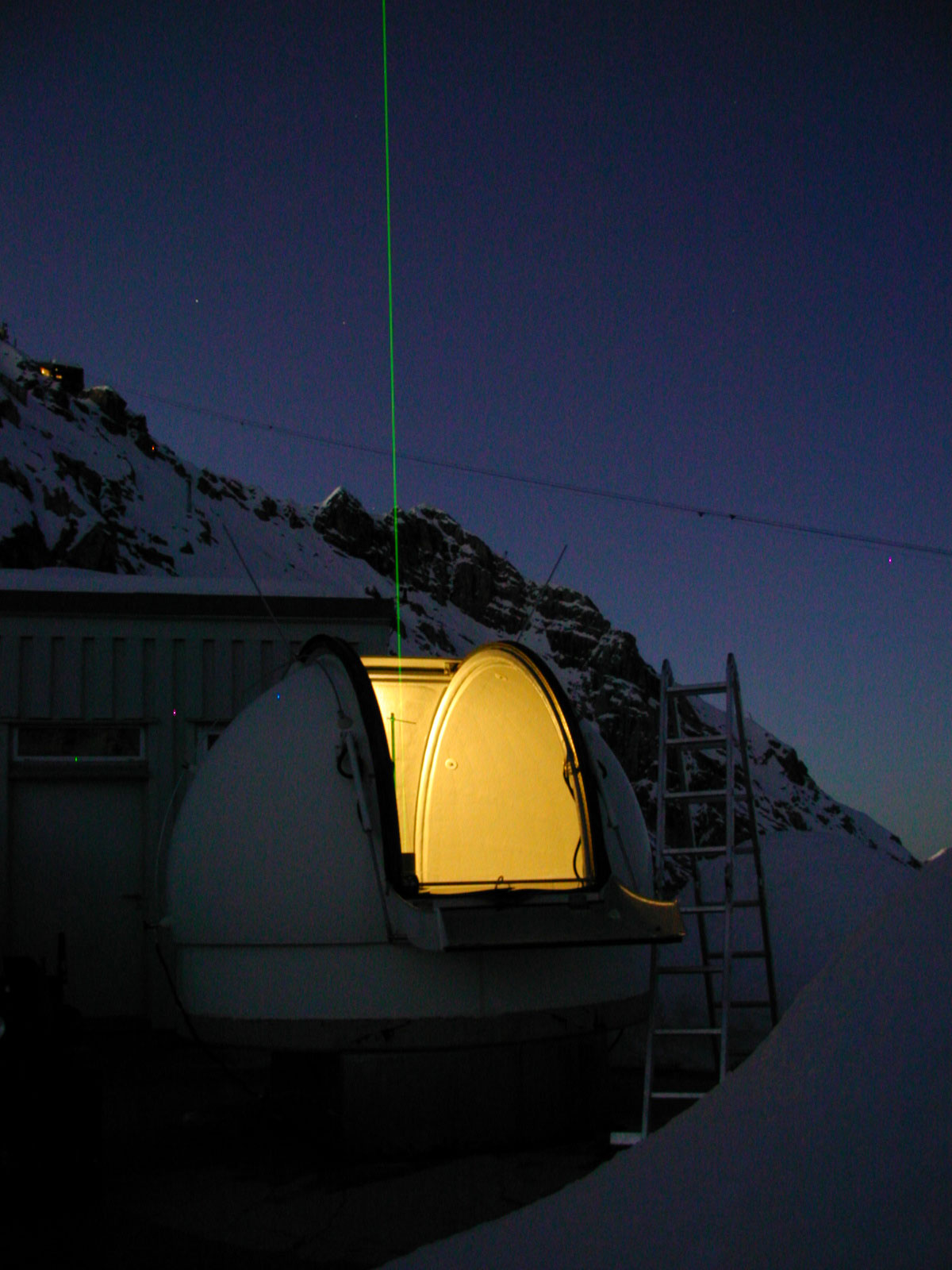


Water vapor is the most important greenhouse gas due to its high concentration and physical properties. Humidity changes have the largest impact on the climate and radiative forcing in the altitude range above 5 km, from where the infrared radiation can be emitted to space. The man-made warming increases the evaporation from the sea surface which covers 70% of the planet. As a result, the water vapor concentration in the atmosphere increases and thus intensifies the greenhouse effect. On the other hand, the increasing water -vapour content leads to changes in precipitation and cloud formation that may counteract the global warming. Measuring water vapor at middle and higher altitudes is a difficult task.
KIT has developed a unique high-power differential-absorption lidar (DIAL) system that is operated at the Schneefernerhaus research station. The routine measurements, carried out up to the tropopause region even during daytime, impressively demonstrate the potential of this technique. The system performance considerably benefits from the high-altitude location of the laboratory outside the moist boundary layer. The DIAL ideally complements the other remote-sensing (lidar, FTIR, GPS) and in -situ instrumentation operated on the Zugspitze.
No operational sounding technique has yet been established for the lower stratosphere where water vapor, in spite of its low concentration, also plays an important role for both the chemistry and the radiative budget. Therefore, an extension of the water vapor soundings with a 300-W Raman lidar system is envisaged, which is expected to yield nighttime measurements up to 30 km. This system also provides profiles of the atmospheric temperature to more than 80 km. Furthermore, spectrally highly resolved measurements of the thermal infrared atmospheric radiance, combined with the humidity and temperature profiles, as well as the other trace constituents measured in the Garmisch-Partenkirchen area, will provide a fully experimental approach to climate research.